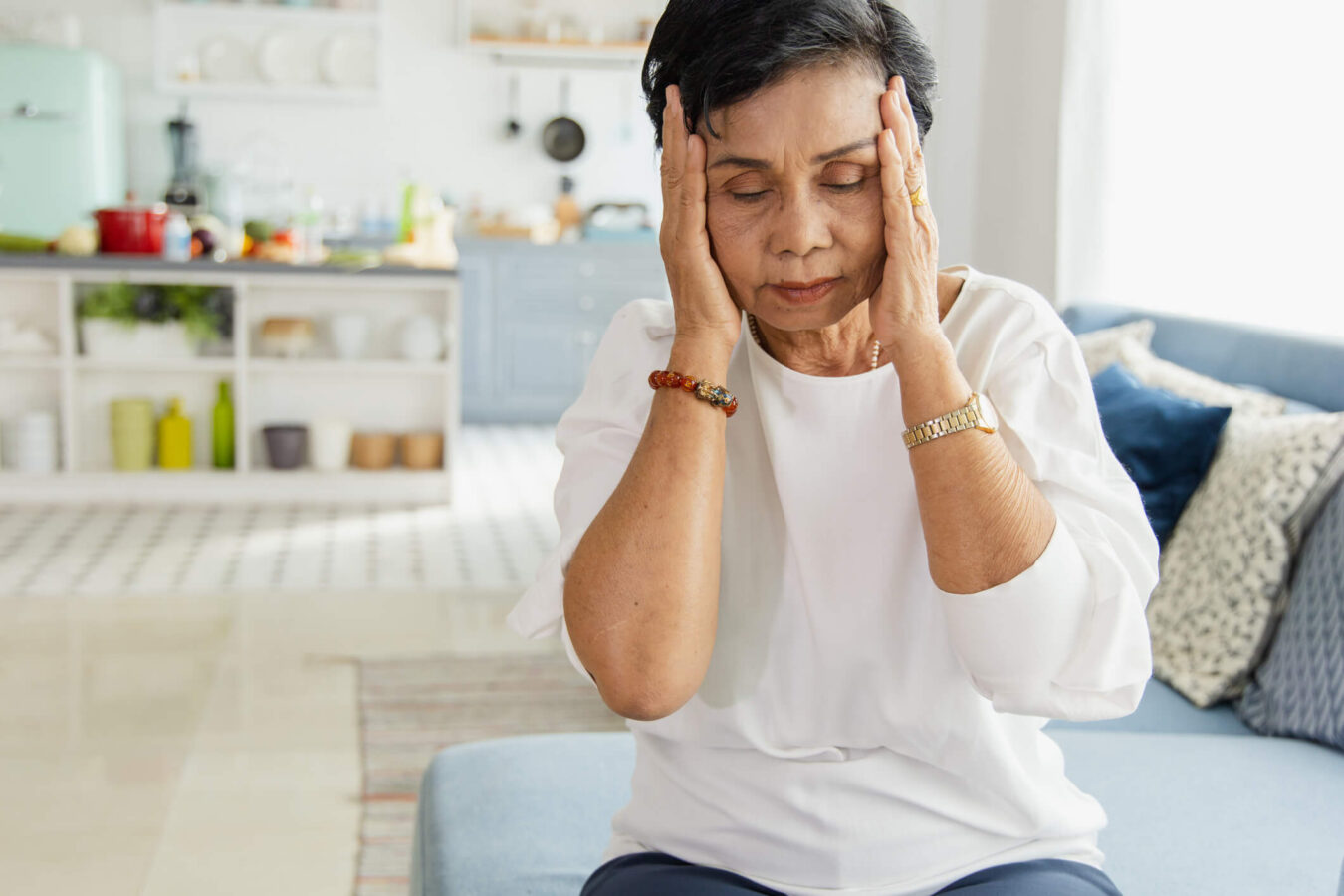
The vestibular system includes parts of the inner ear and the brain’s central nervous system. It processes sensory information that controls balance and eye movements. A vestibular disorder is a condition that occurs when these signals are disrupted. Vestibular disorders have a wide range of causes and symptoms. We will explore these below and discuss the benefits of physical therapy for patients experiencing balance and orientation challenges.
To better understand how certain injuries and diseases manifest as balance problems, it’s helpful to learn a bit about how the vestibular system functions.
The human ear is comprised of a complex system of cartilage and bone. Within it lies a network of fluid-filled semicircular canals. As we move and change position, that fluid begins to shift. A sensor in the inner ear detects that motion and sends impulses to the brain about equilibrium, motion, and spatial orientation.
When the vestibular system is functioning properly, messages sent to the brain from the left and right sides are symmetrical. If these impulses are disrupted, or they conflict with those coming from another system in the body, you may develop a vestibular disorder.
Keep in mind, the vestibular system is just one piece of a complex puzzle that helps maintain the body’s center of mass over the base of support. The brain integrates vestibular system messages with others coming from the eyes, muscles, joints, and produces motor output to complete all of the functions involved in stable, balanced movement.
Vestibular disorders have many possible causes. Some, like medication, may only affect balance temporarily, while chronic conditions may need ongoing physical therapy to manage symptoms.
Certain medications can damage the ear, causing ototoxicity, or ringing in the ear and hearing and balance problems. There are more than 200 ototoxic medications on the market and some are used to treat heart disease, cancer, and serious infections. Talk to your provider about the risks, benefits, and alternatives of your medications if they cause vestibular system issues.
Inner-ear infections can also impact balance. Labyrinthitis is inflammation of the inner ear characterized by sudden, severe symptoms that gradually reduce over time. It is primarily caused by bacterial infections and viral infections, and in rare cases—trauma or autoimmune conditions.
Vestibular neuritis affects the nerve in the inner ear that sends messages about head position and balance to the brain. Researchers aren’t certain of the cause of vestibular neuritis, but it’s believed to be viral in origin. Symptoms typically peak withing the first 24 to 48 hours and can take weeks or months to completely resolve.
A vestibular migraine is a type of migraine that affects balance. During an attack, you may feel the sensation of moving, spinning, or falling—even if you are sitting still. These migraines are one of the leading causes of vertigo among adults in this country, affecting 3% of the population.
According to the Brain Injury Association of America, up to half of people with a history of traumatic brain injury (TBI) experience vestibular impairments. TBI can occur from a forceful bump or blow to the head, or an object actually piercing the skull and entering the brain.
A concussion is one example of a non-penetrating TBI that occurs when the head rapidly changes direction, causing the brain to shift within the skull. That unnatural motion causes chemical changes that manifest as physical, cognitive, and perception changes. Dizziness, vertigo, and loss of balance are associated with concussion in many patients.
The human vestibular system normally declines with age. That decline is associated with reduced spatial cognitive skills in healthy adults, and is more common in individuals experiencing decline to Alzheimer’s disease and dementia.
Because weakness and postural instability increase the risk of falls, it’s important to monitor individuals with these conditions and prescribe physical therapy to address their symptoms.
Meniere’s disease is a rare disorder of the inner ear that causes severe vertigo, ringing in the ear, and hearing loss. Meniere’s is caused by a buildup of fluid in the inner ear. It typically only affects one ear, in adults between the ages of 40 and 60. People with Meniere’s may experience sudden “drop attacks” which cause them to lose their balance.
Did you know you have tiny calcium carbonate crystals lurking in your ear? These crystals are called otoconia, and they play a key role in maintaining balance. Their job is to stimulate tiny hairlike cells in the ear that tell the brain when the body accelerates.
If these crystals are dislodged from their proper position, your sense of balance becomes disrupted. This is called benign paroxysmal positional vertigo and is the most common cause of vertigo. In most cases, your healthcare provider can reposition your body to move the crystals back into place. Sometimes medication may be needed to help manage acute symptoms.
A loss of balance is just one sign of a disorder of the vestibular system. Other symptoms associated with vestibular disorders described above include:
These symptoms do not always mean you have a vestibular disorder. However, it is important to see your healthcare provider for an accurate diagnosis to determine the best treatment approach for your condition.
Vestibular disorders can be disconcerting and even frightening for many patients. Feelings of instability and dizziness can make you feel out of control and hold you back from being active and independent. As physical therapists and “movement experts,” there is a lot we can do to help you manage, or in many cases get rid of, symptoms and improve your quality of life.
Exercise to increase balance and stability is a big part of vestibular physical therapy. Your program begins with a comprehensive assessment to determine the underlying factors contributing to your symptoms.
Balance involves three systems in the body (vestibular, visual, and proprioception.) Based on the results of your evaluation, we create a personalized physical therapy program to address deficits in all areas to achieve the best outcome possible.
Vestibular therapy goals include: improved eye movement control, balance retraining, and stretching and strengthening exercise to improve stability. Along with exercise to improve balance, we also teach you new ways of completing basic tasks so you can prevent falls and safely move through your day. Are you feeling a bit off balance lately? You can feel safer and more stable with physical therapy. Find a clinic near you.

